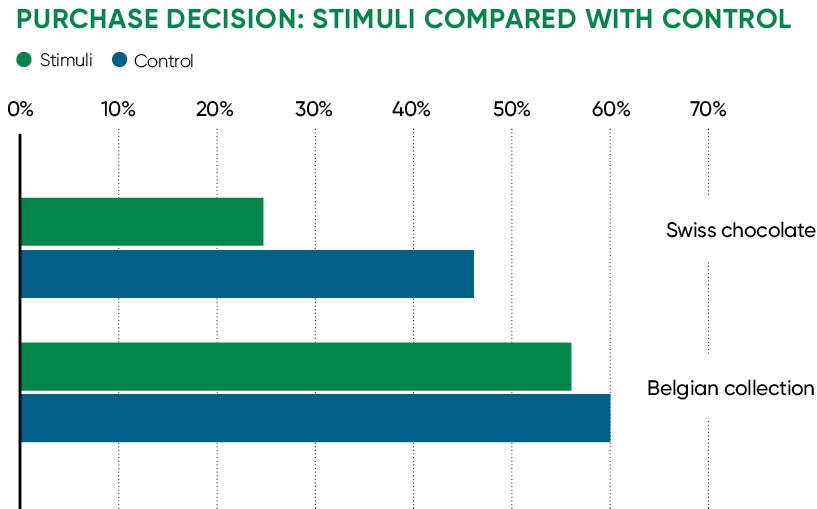Marketers are faced with a growing diversity of advertising channels as well as coming under greater pressure to justify their budgets. As a result, senior management are asking them to show that investments in Facebook or Twitter activity, TV commercials or influencer marketing campaigns are producing a measurable return.
As these opportunities and demands increase, there is one place any marketer can be certain the target audience will interact with the product – that’s the shelf. However, as just one of many choices faced by the consumer, it is essential that brands stand out on-shelf, attracting the eye as well as identifying the product and its brand values so it is the one chosen. This is putting a greater focus on the look and feel of a product’s packaging.
“Research shows that investment in eye-catching, attractive packaging can be easily justified by the resulting increase in sales,” says Richard Burhouse, commercial director of API Group, a leading manufacturer and distributor of foils, laminates and holographic materials that provide exceptional brand enhancement for consumer goods and printed media worldwide. Its packaging solutions help companies in industry sectors as varied as premium drinks, confectionery and perfumery to stand out on the shelf.
Shoppers looked at the packaging with embellishments nearly 50 per cent more times than the packaging without
Mr Burhouse points to the example of budget range chains such as Aldi and Lidl that have seen significant increases in sales as a result of giving their packaging a more premium look through the addition of foils and enhanced packaging technology.
Focus groups have long been used to explore consumers’ attitudes towards packaging. However, Mr Burhouse and his team were keen to undertake a more scientific analysis and so they sponsored a research project with Package Insight, a high-tech startup based at Clemson University in South Carolina in the United States that analyses and develops consumer-driven packaging. The aim was to discover whether adding metallic foils and laminates to premium chocolate packaging can attract the attention of consumers and lead to an increase in sales.
“We wanted to undertake a quantitative study to see what happens,” says Mr Burhouse. “This technology tracks the movement of the shopper’s retina. It’s subconscious and therefore more objective than the information that you’d get from the traditional focus group.”

The CUshop Customer Experience Laboratory at Clemson University recreates a representative shopping environment. Here 70 “shoppers” wore calibrated, state-of-the-art eye-tracking glasses while selecting purchases from a list. These included chocolates. On the shelf were chocolates that came in laminated cartons or packaging with embellishments such as stamped foil. As they shopped, their eye movements were recorded, providing insights into why they chose one chocolate product over another.
“We wanted the most rigorous study possible and, for instance, we moved the products around so that the reaction of the ‘shoppers’ wouldn’t be affected by the position of the product on the shelf,” explains Mr Burhouse. “We also used brands that would not be known to those taking part in the tests.”
As they moved around the “shop”, the exact eye movements of the “shoppers” were then analysed. The results showed that they looked at the packaging with embellishments nearly 50 per cent more times than the packaging without. They also looked at these enhanced packs up to 1.46 times longer than those in the control group. Most significantly, when consumers were asked whether they’d be more inclined to purchase a chocolate offering that was foil stamped, more than two thirds (69 per cent) said they would.
“We’ve seen from our conversations with brand owners that they’re interested in using technology like this because it’s an excellent way of prototyping,” says Mr Burhouse. “It works well to test an investment in foil and other packaging enhancements among consumers before a launch. This means that brands can justify investing in more sophisticated packaging.”
One exciting new innovation comes in the form of holographics. This has two very different benefits. On the one hand, it can make products look more attractive and appealing on the shelf, while on the other it is a useful tool to combat the growing threat of counterfeiting.
“We’re finding that more and more brands are coming to us to talk about these opportunities because, thanks to our unique, new delivery system, we’re better positioned than anyone else to create holographics which offer security and aesthetic appeal,” says Mr Burhouse. “As the marketing focus turns to the shelf, foil, laminate and holographic technology is increasingly allowing us to create and test a whole new generation of more appealing packaging that truly delivers for brands.”
For more information please visit www.apigroup.com




